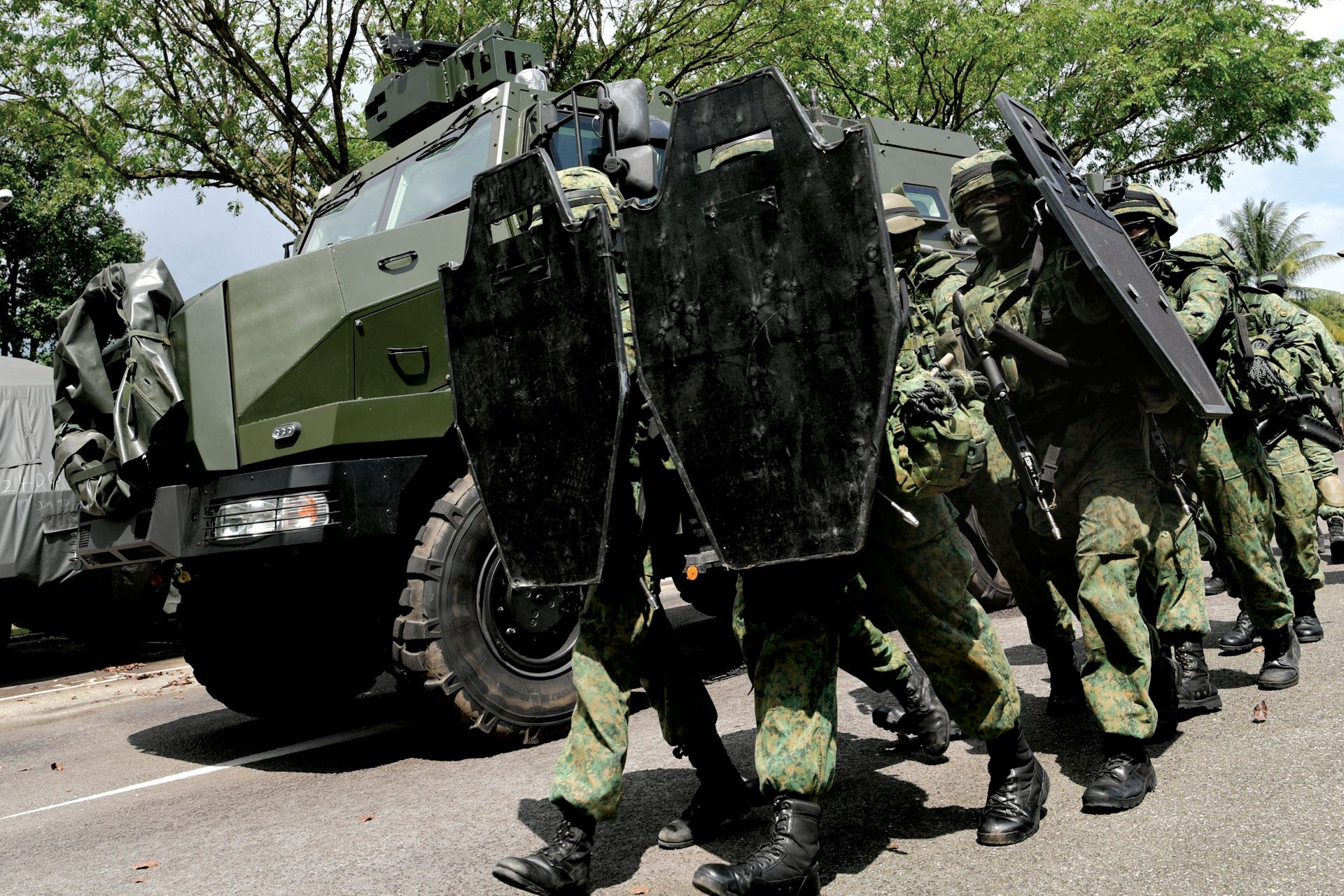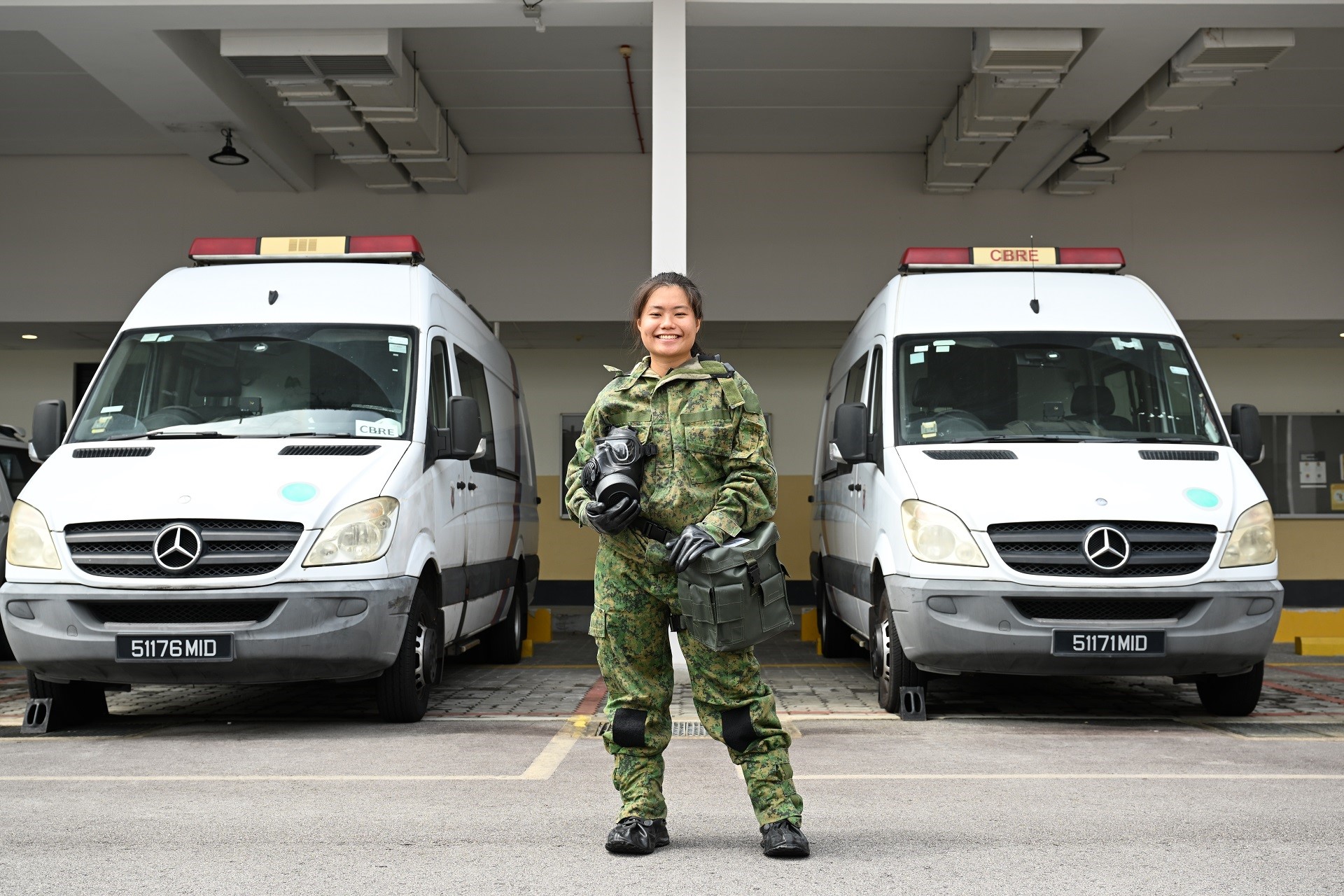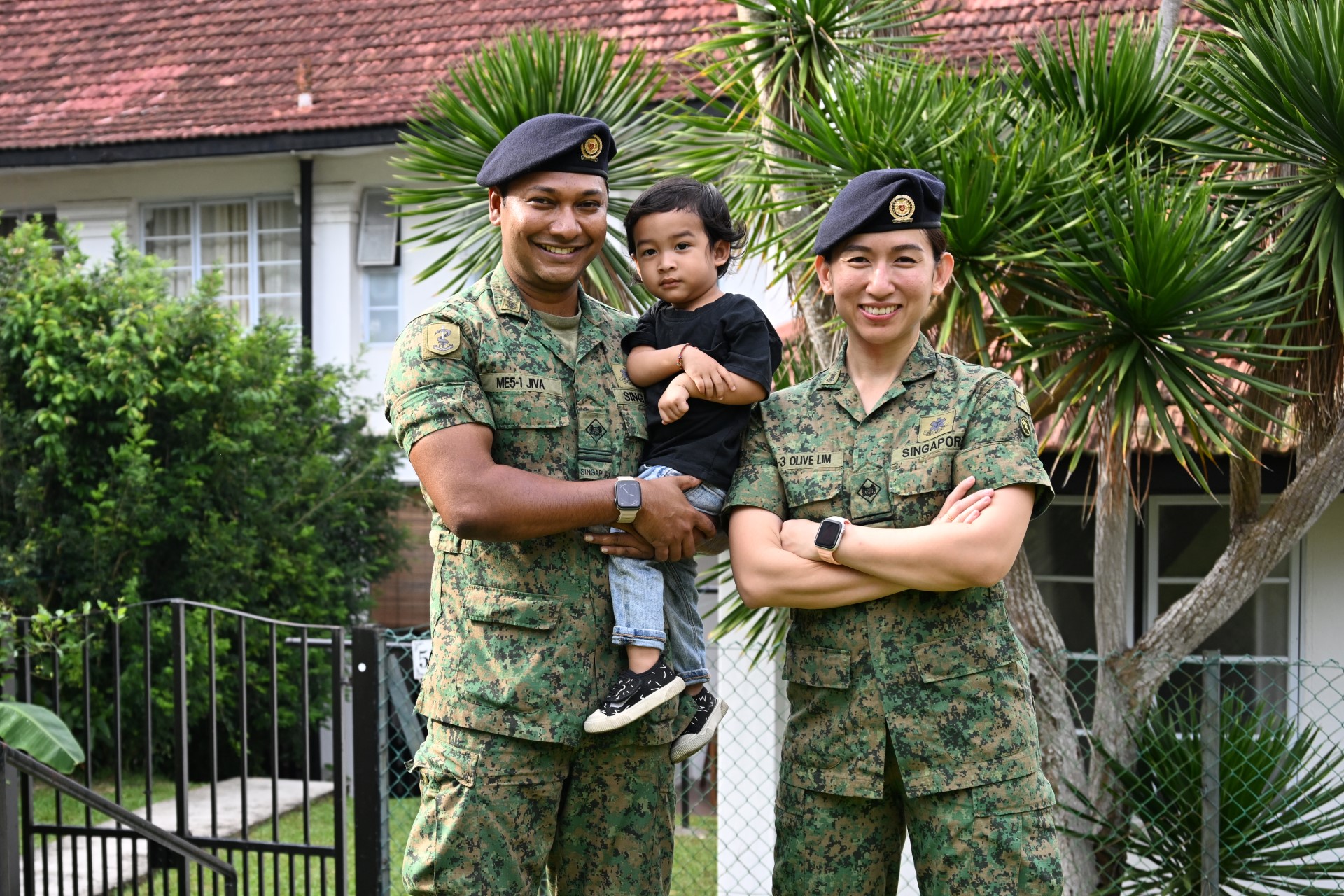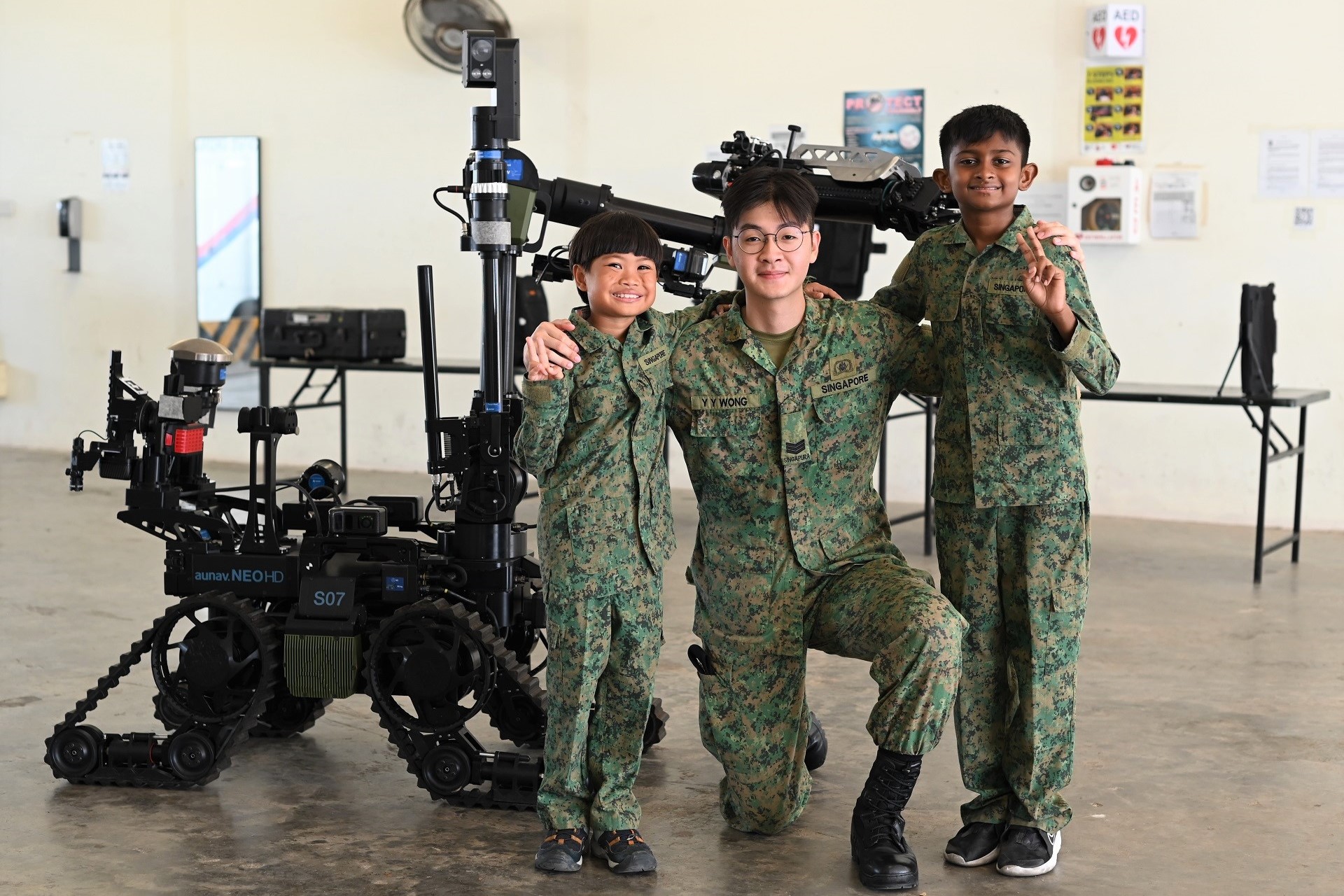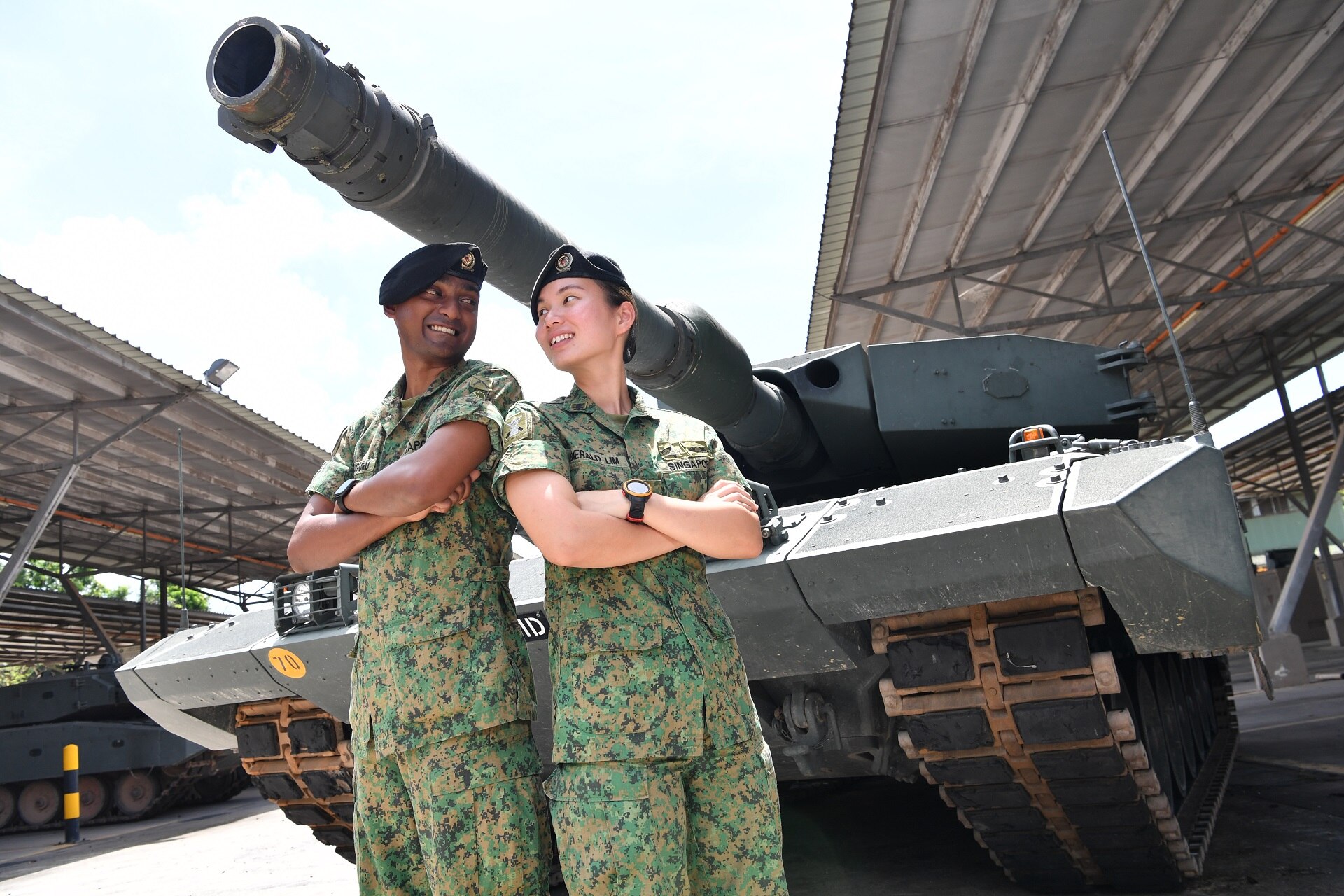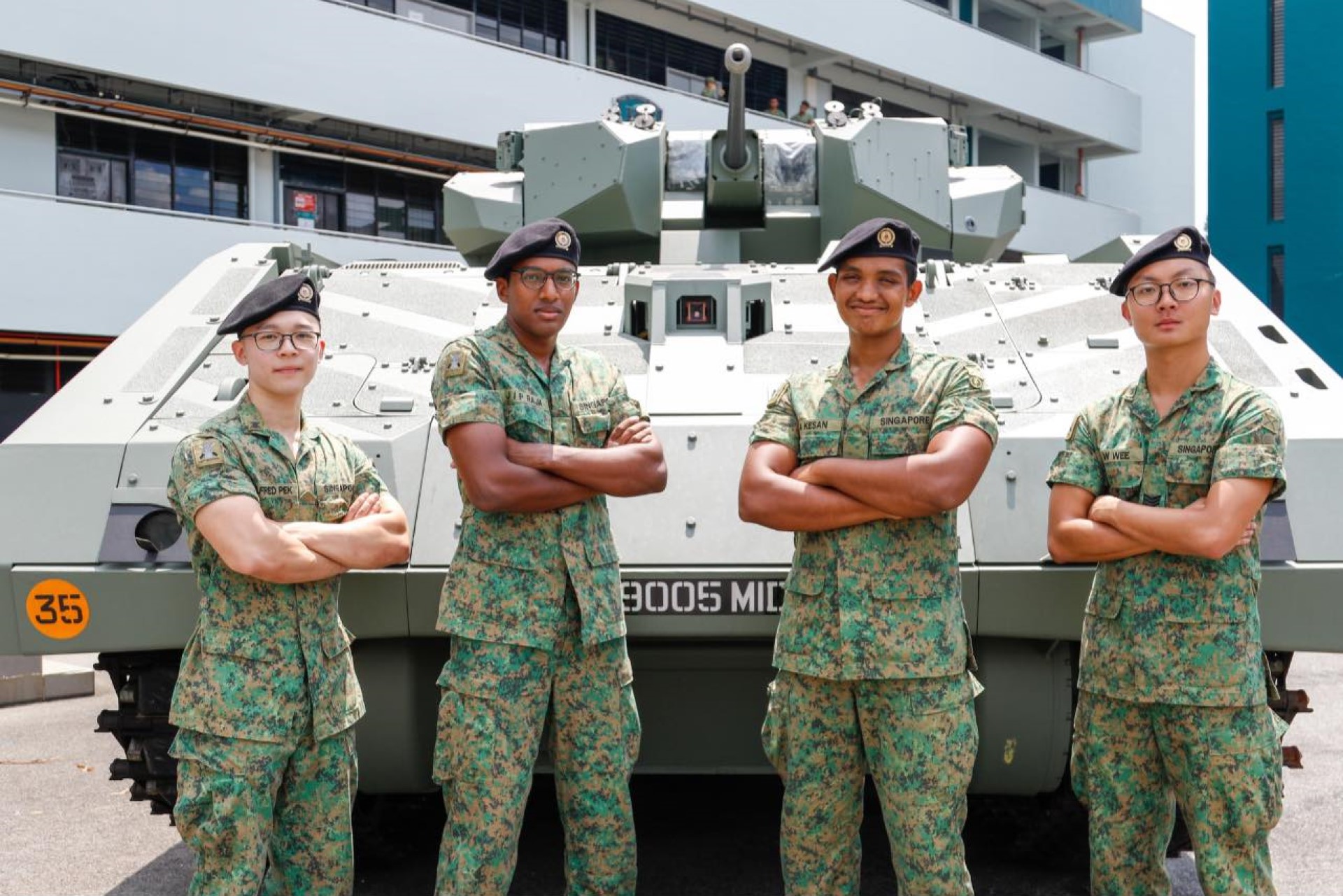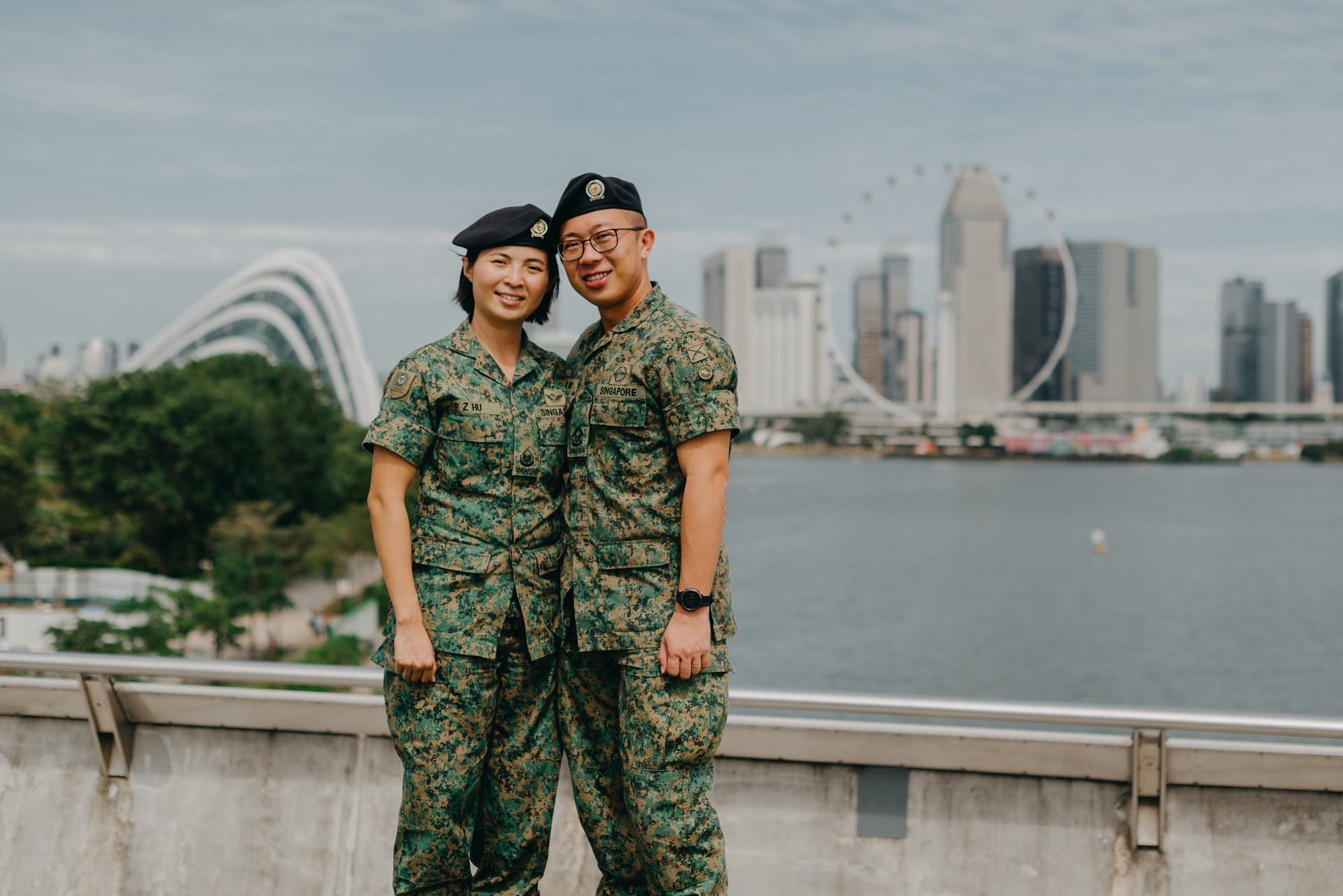Rapid response force
PIONEER looks at the makings of the Army Deployment Force (ADF), which was set up two years ago to sharpen Singapore's counter-terrorism (CT) capabilities.// STORY Thrina Tham
// photos PIONEER photographers
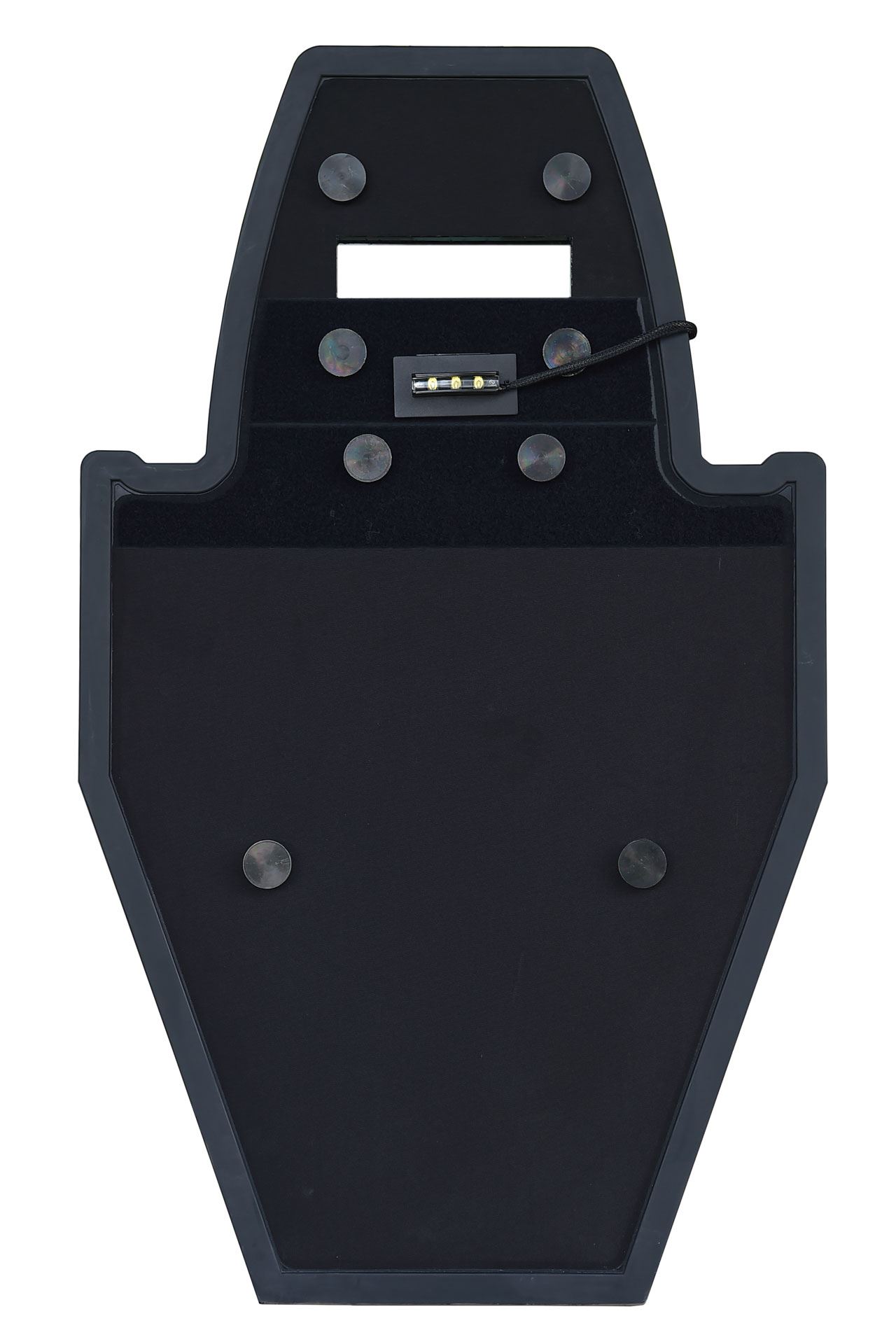
The 13kg ballistics shield that the ADF uses during CT operations.
|
Multiple blasts break the weekend calm as home-made explosives rip through three churches and a police station in Surabaya, Indonesia's second-largest city.
The coordinated attacks, spanning two days from 13 May, were carried out by two separate families of suicide bombers. They killed 27 people (including 13 perpetrators) and injured more than 50. The attacks were linked to a local terrorist group loyal to the Islamic State in Iraq and Syria (ISIS).
A separate 2016 terror attack by ISIS in Jakarta, Indonesia, left seven dead and 50 injured.
For Singaporeans, these incidents are a reminder that terror could strike at any time. And for ADF soldiers, the need to always be alert and prepared is ingrained in their way of life.
Inaugurated on 12 Jul 2016, ADF is a battalion-sized force comprising highly trained Regulars with niche capabilities to respond to threats in both urban and non-urban settings.
"The basic task for the ADF is (to act as a) rapid response element because speed is important in counter-terrorism (CT)," said Defence Minister Dr Ng Eng Hen in his 2016 Singapore Armed Forces (SAF) Day interview. "It's not quite like conventional missions where you have time. This time, you have to respond in minutes."
Two years on, the force remains more relevant than ever.
"The ability to swiftly deploy a sizeable force to counter threats and assist civil authorities continues to be the ADF's raison d'etre," said its Commanding Officer, Lieutenant Colonel Ivan Du.
"As ISIS continues to be weakened in Iraq and Syria, we see increased activities of the returning fighters in our region. More important than ever, the unit stands ready to respond if terror strikes our shores."
The ADF works with the Island Defence Task Force, Special Operations Task Force and Home Team agencies as protectors to guard the nation against terror threats.
It can also be activated to play a peacekeeper role in peace support operations overseas.
Another role of the ADF is that of a preserver to ensure safety and provide aid during disaster relief missions.
In every role that the ADF plays, the troops stand by their motto: "Always Ready".
// PROTECTOR //
Reports break of multiple attacks across Singapore. Panic spreads as a tanker is destroyed at Pasir Panjang Terminal and a warehouse on Jurong Island is hit.
Surveillance camera footage show that civilians are being held hostage. Witnesses confirm hearing gunfire.
The ADF is one of the first to be activated, right after the Home Team. ADF troops report to camp to gear up and load their weapons. Within a short time, the assigned forces move out in Peacekeeper Protected Response Vehicles (PRVs).
This was the scenario played out during an activation exercise at Amoy Quee Camp on 7 and 9 May, to test the readiness of the ADF soldiers.
Their mission: to protect lives and restore normalcy.
Securing the scene
To do this, the troops are deployed to secure the building by forming a perimeter around it, called the inner cordon. Moving swiftly in two-men teams, they set up strategic posts to prevent the aggressors from leaving the incident site.
In their concealed posts, the soldiers are also eyes on the ground — they observe the situation and feed intel back to Headquarters (HQ). But they do not stay in their positions for long.
After a trying wait, a terrorist comes out of hiding, holding onto a civilian as a shield. To make things worse, the hostage is strapped with an Improvised Explosive Device (IED).
"That was one of the most stressful scenarios during the mission. The terrorist was demanding to be let off or he would detonate the IED," said 2nd Sergeant (2SG) Ang.
Reacting promptly, the soldiers began to distract the aggressor by communicating with him.
"When he was calm, we managed to subdue him and prevent further loss of lives."
The ADF soldier added: "The exercise was very realistic. Once we were activated, we had to be on the ball and be ready for the mission."
Sharpening their skills
It is rigorous day-to-day training that prepares troops to perform during such activation exercises, noted Master Sergeant (MSG) Affandi.
"Their drills and coordination must be there so they know what to do. Especially in an urban environment, there are many blind spots where the enemy can be hiding, so their situational awareness must be at the highest," said the Training Cadre.
To be able to execute their drills like clockwork, the operational companies go through regular urban operations training and hone their shooting accuracy in live-firing training at least twice a month.
They also sharpen their skills in manoeuvring and shooting in close quarters at the Multi-Mission Range Complex (MMRC), which allows them to simulate both day and night shoots.
In a near zero-light environment, the toughest challenge is coordinating with your teammates, said 3SG Poon. Even with night-vision goggles, the soldiers' vision is significantly reduced and they have to stay close to their teammates.
3SG Poon and his team glided through the rooms in a meticulously planned sequence and took seconds to judge and decide who to save and who to shoot.
"We are all on the same page. Even though it's very dark and the space can be cramped, we have trained together before and understand the roles we each play.
"So we know how to work things out and minimise the need to talk," he explained.
To up the ante for the soldiers, Ace Company platoon commander Captain (CPT) Ashraf expected his men to aim more accurately than just hitting the overall target.
"We tell them to aim at specific areas on the target and it really improves their marksmanship," he said.
Such precise training also help the soldiers reduce the time they take to aim their shots.
This training marked the first time that an SAF unit used the 13kg ballistics shield during live firing.
Said CPT Ashraf: "The men get to feel how heavy it is and how hard it is (to move with the shield). It's good training and we're trying to help them build confidence for actual CT operations."
// PEACEKEEPER //
The deployment of SAF troops to Iraq for peace support operations puts them in the middle of dangerous territory. Yet it is a necessary step to keep terrorism at bay by dealing with it at its source.
Since June 2017, SAF medical teams and the ADF have been working closely with the Australian Defence Force in Iraq to provide healthcare support and contribute to coalition efforts against ISIS.
At this year's Committee of Supply debate, Dr Ng noted that the troops have made "considerable progress" in the fight against ISIS.
He also announced that the SAF would send more troops as part of a Counter-Terrorism Training Unit (CTTU).
Comprising ADF servicemen, the first CTTU will be deployed in the later half of this year. It will partner with its Australian counterpart to train the Iraqi Security Forces (ISF) in tactical-level weapons and combat tactics.
On the frontline
For those who have returned from their deployment, memories of the harsh conditions in Iraq remain fresh in their minds.
"We were in a highly secure camp… but you never know what will happen. You must plan for contingencies," said the Operations Officer of the second medical team in Iraq, who was responsible for the team's work processes.
To keep the soldiers sharp and ready, the coalition camp would put its forces through exercises, even simulating an attack in the night.
"One night, they started a big fire and announced 'incoming, incoming'. Some men were in the dining facility, some were in the gym. I was in the medical centre doing my work when this happened," recalled the former Officer Commanding in ADF.
"That's where I practise my team's drills. If they're not with me and cannot make it to the bunker, they have to call me.
"I need to make sure all my soldiers are accounted for."
The medical officers and medics then rushed to the camp hospital to prepare for a mass casualty scenario.
Rising to the challenge
An ADF senior medic found that his skills were much needed in treating the coalition soldiers. "I had to administer drugs to patients and do patient assessments during overnight shifts. It can be challenging because you never know what to expect when there's an emergency after office hours."
He also found purpose in sharing his medical knowledge with the ISF troops.
"We interacted with the ISF front-liners; some of them have been to battle and they shared their stories and showed me their battle wounds.
"Because of this, I was even more motivated to teach them to do proper first aid and combat aid procedures."
While training and exercises kept the team busy (they worked six days a week), they bonded through weekly cookout sessions of Singaporean delicacies like laksa and nasi biryani.
As another former ADF soldier, who was Operations Officer of the first rotation, put it: "Seven thousand, one hundred and seventy-six km away from Singapore for three months and 800 man-hours — the biggest challenge was being away from home."
Yet like the rest, he has no regrets about going to Iraq: "I was ready to contribute to the success of the team and the country."
// PRESERVER //
When a disaster like an earthquake or tsunami strikes, homes are destroyed and the water supply may be contaminated.
The ADF emergency response team stands ready to join in relief efforts and take on the mission of providing temporary shelter as well as clean drinking water for affected residents. Thus, the need to maintain their skills for such work is critical.
Training at Nee Soon Camp, a team from Spear Company practises the setting up of a tent that can house five people.
Working quickly and deliberately, they erect the tent with poles and put up a weather-resistant outer cover to protect it. Once the tent and its cover is secured to the ground with pegs, the men go in to add an inner cover, an extra layer to ensure comfort and sanitation for its eventual occupants.
Rebuilding lives
In certain cases, the SAF will also supply the residents with tents and train them to set it up.
Beside the tent, two ADF soldiers work on building a portable toilet. The single cubicle is designed to provide civilians with a sense of dignity and privacy amid the devastation. More importantly, it ensures that waste is disposed properly and does not contaminate a potential water source.
The team can set up the tent in 12 minutes and the portable toilet in three.
Mission for a good cause
Concurrently, a second response team sets up the Water Purification Unit (WPU) that filters and processes river water to produce clean drinking water for the residents.
As an ADF transport operator, it is Corporal First Class (CFC) Nazri's role to search for a source of water that is easily accessible and away from risk.
"There are many considerations. If the source is a fast-flowing river, we have to be careful (to make sure) the pump doesn't get pulled away by the water
"If the source is at the shoreline, we have to look for the nearest shelter in case there is a thunderstorm," he said.
Although not the conventional job of a soldier, such relief efforts are just as important as any other role," added 2SG Tan. The platoon medic said: "A soldier's job is to defend his homeland. But if the need arises, we also have the manpower, knowledge and equipment to help others. It's meaningful to give aid to those who need it."
// ALWAYS READY MEDICAL FORCE //
While ADF soldiers form an inner cordon to isolate the area of an attack, a wider outer cordon is set up some distance away from the incident site. Situated here is the ADF Battalion Casualty Station (BCS), all set to stabilise the wounded and get them ready for treatment at a nearby hospital.
The BCS is a rapidly deployable automated platform equipped to provide life support.
"We can be activated anytime, 24/7. That is why we need to have the BCS ready to be able to move out quickly," said medical officer Captain (CPT) (Dr) Chua, who heads the team.
Compared to a conventional BCS which has a 12-man team with two medical officers, the ADF BCS works with a lean team of six — one medical officer, one senior medic and four medics — along with a transport operator.
And if the medical officer goes down, the medics are trained to evaluate and diagnose patients independently.
"(The ADF is a battalion with) a very high operational tempo, so we also have a lot of high-risk training. It's important for our medics to be able to handle more severe casualties," said CPT (Dr) Chua.
Teaching soldiers combat aid
As the ADF fights close to the frontline, every soldier has to go through the Combat Casualty Aid Course — a first aid course for high-readiness units.
"We require the troopers to be self-sufficient in some medical capabilities…like applying a very tight tourniquet to the site of bleeding and setting an intravenous (IV) line to give fluids," said CPT (Dr) Chua.
With this skill, a soldier is equipped to treat his buddy who is suffering from life-threatening trauma (such as excessive bleeding) and keep him alive before he reaches the BCS.
The ADF medical team also conducts a Tactical Combat Casualty Course (TCCC) to enhance the troops' operational readiness. TCCC teaches soldiers various combat aid tactics with the aim of reducing preventable combat deaths.
// MAKING THE CUT //
Before soldiers can don the ADF patch, they have to make it through the gruelling 21-week Combat Qualification Course (CQC).
It is 1am when the ADF Dragon Company trainees are awoken from their beds.
Their first task — a series of push-ups, crunches and crawls.
A tyre race follows. Trainees work in teams to flip a 100kg tyre across the parade square.
Next in their test of endurance, they clutch a long rope and gather all their strength to pull a 5-tonner truck over a 100m distance.
Every new evolution gets tougher than the last, with a short water break and temperature check between each. Trainees grit their teeth as they carry a 20kg weight up and down a flight of stairs. They then proceed for more physical training drills.
But nothing deters the 28 trainees, who are there to prove that they have what it takes to graduate from the CQC and wear the ADF patch.
The course is designed to test the physical and mental readiness of trainees before they are posted to the ADF's operational companies.
"The exercise is the best way to show them what resilience means," said Lieutenant (LTA) Khalid, one of the training cadres.
"It doesn't matter if you're sleeping, or eating, or with your loved ones. When you're activated and Singapore needs you, you have to respond," added the Platoon Commander of Dragon Company.
The troops are eager to prove they are ready but they do not expect the twist — a sudden call to "continue mission".
"They told us that we ended the exercise but just before we touched our breakfasts, they immediately sounded the siren again. I felt really demoralised when running back," recalled trainee Private (PTE) Oh.
"It was much tougher than I expected...but when I almost gave up, my buddies rushed to assist me. It felt good that I have these people to trust and count on. That motivated me the most," he added.
Dawn breaks as all 28 trainees are presented with their course flag, marking the end of the exercise.
They are a step closer to earning a spot in the ADF but the course has more high-key activities lined up for them.
These include training for quick insertion into buildings by helicopter-roping as well as in basic self-defence techniques that train them for close-combat situations.
To graduate, trainees must complete a 10km march in 90 minutes, a warrior competition that tests their combat fitness and weapon competency, and an 18-hour finale exercise.
The course also assesses trainees on their competencies in inner cordon operations for counter-terrorism and Humanitarian Aid and Disaster Relief missions.
"It's like a crash course. They need you to learn fast and work fast," said trainee 3SG Iskandar.
Since joining the course, 3SG Iskandar has seen his fitness improve dramatically, with his Individual Physical Proficiency Test score going from 85 to 94 points.
"They expect you to be at the top of your game. But at the end of the day, I'm not complaining because when I lie down in bed, I realise I can say I'm a better person."
